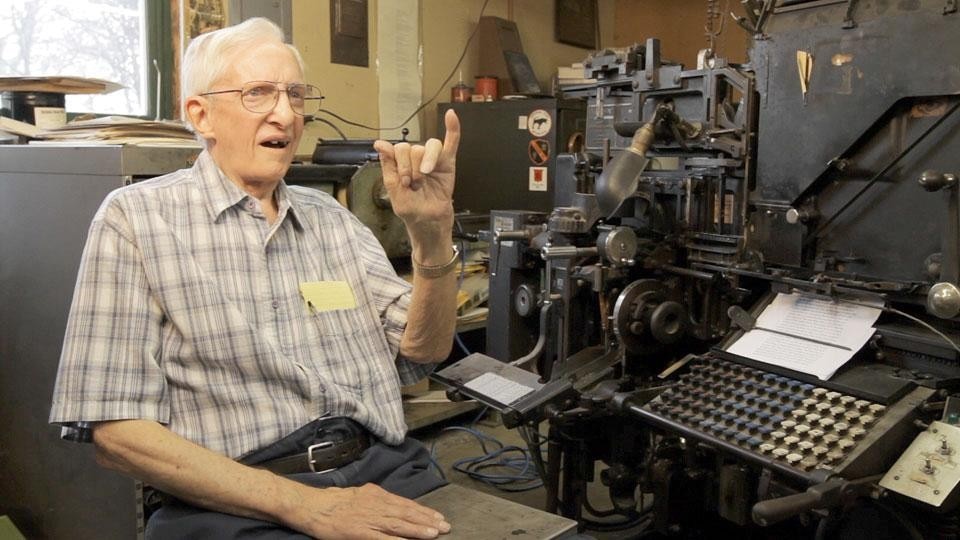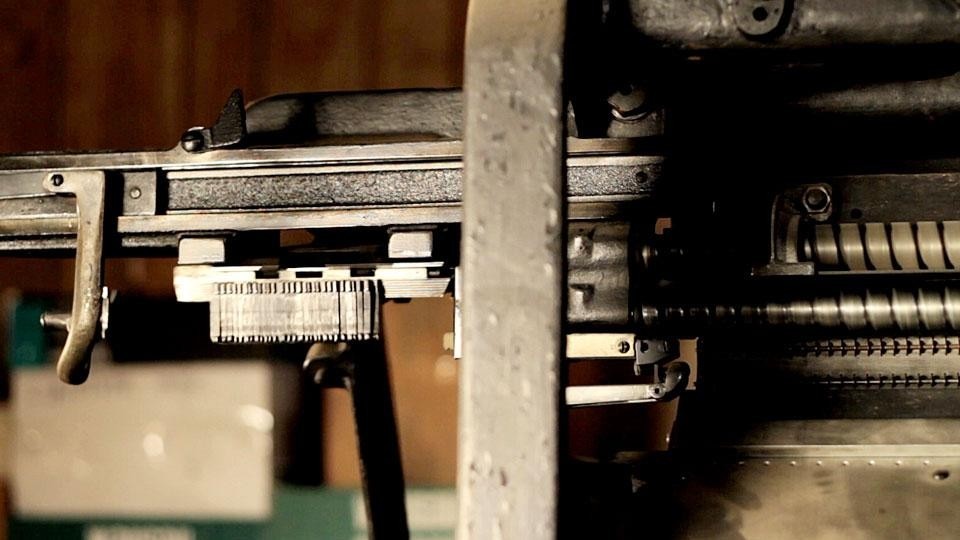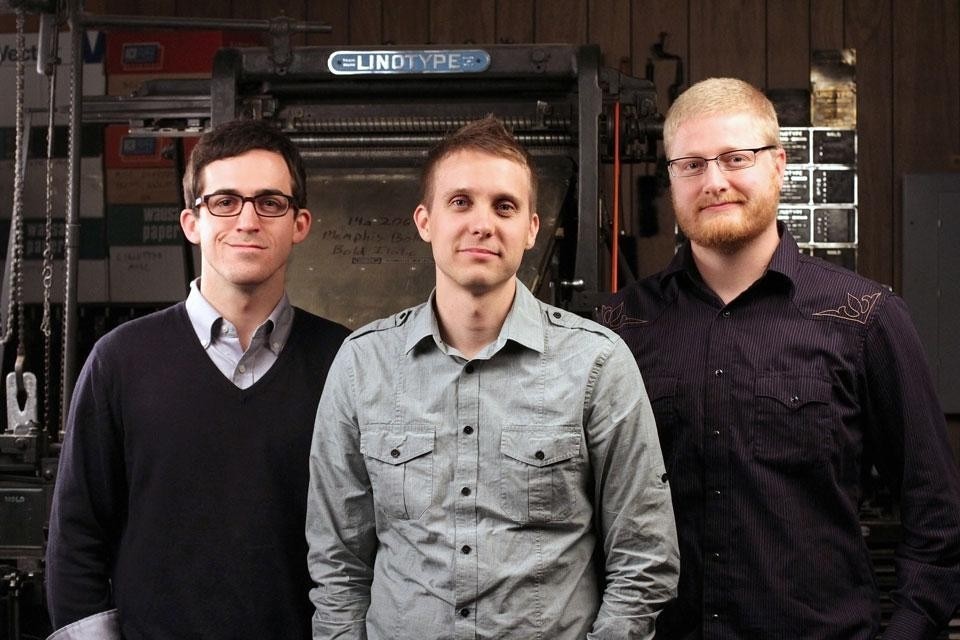What is a Linotype machine? Describing such an item is indeed the challenge put to the creators. It's a complicated and unwieldy marvel, which makes a "line-o-type," as the name implies. Invented in 1886 by Ottmar Mergenthaler, the machine revolutionized the printing industry and had an astounding impact on the world. Before Linotype, the printing process required that words be painstakingly assembled by hand, in reverse, one character at a time. Linotype mechanized all of that, casting in metal entire lines of copy that were typed into a keyboard. Before Linotype, no newspaper in the world had been longer than 8 pages. After, printing was exponentially easier, stories were longer, publications could reproduce faster, and literacy rates abounded. According to newspaper headlines of the day, the amazing Linotype had "moved mankind forward a thousand years in the span of one generation."
In the film, the Linotype story is told not by historians, but by the machine's operators; men who have spent their entire careers tapping out line after line of type. It was a physical and sometimes dangerous job – this monster of a machine was hot, loud, and filled with 288-degree (550° Fahrenheit) molten metal. Operating it required an explicit understanding of the machine's complicated engineering, and intense concentration to function as super-skilled stenographers in a pre-computer age.
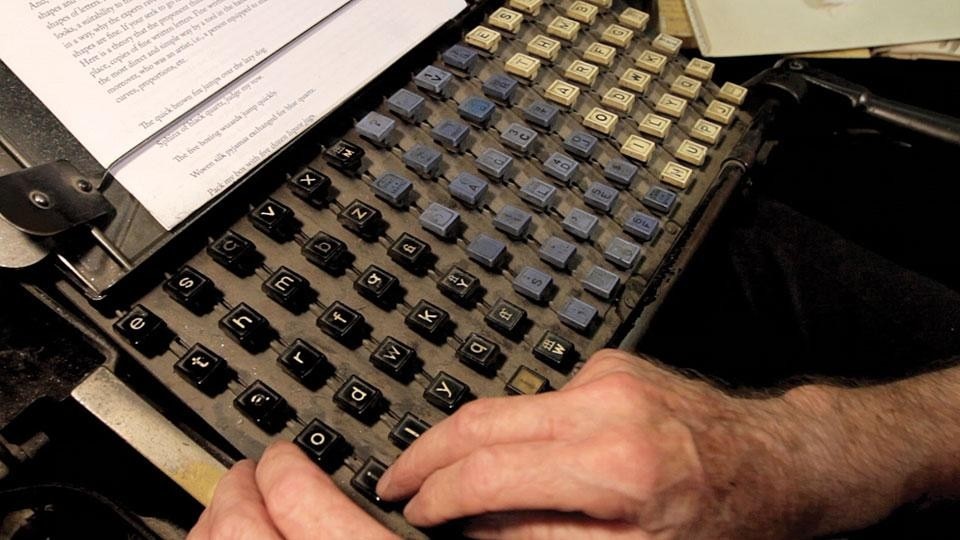
So, the movie isn't actually about a piece of machinery. It's about a cast of characters, each one telling their own versions of love stories for such an unusual contraption. Their adoration is palpable. Many of the characters in the movie are in their late 80s, and all of the characters are painfully the last to hold onto an expiring generation of knowledge. There are, of course, a few young enthusiasts, but they've been attracted to the Linotype invention for its obscurity, and will never truly understand it as a lifeblood.
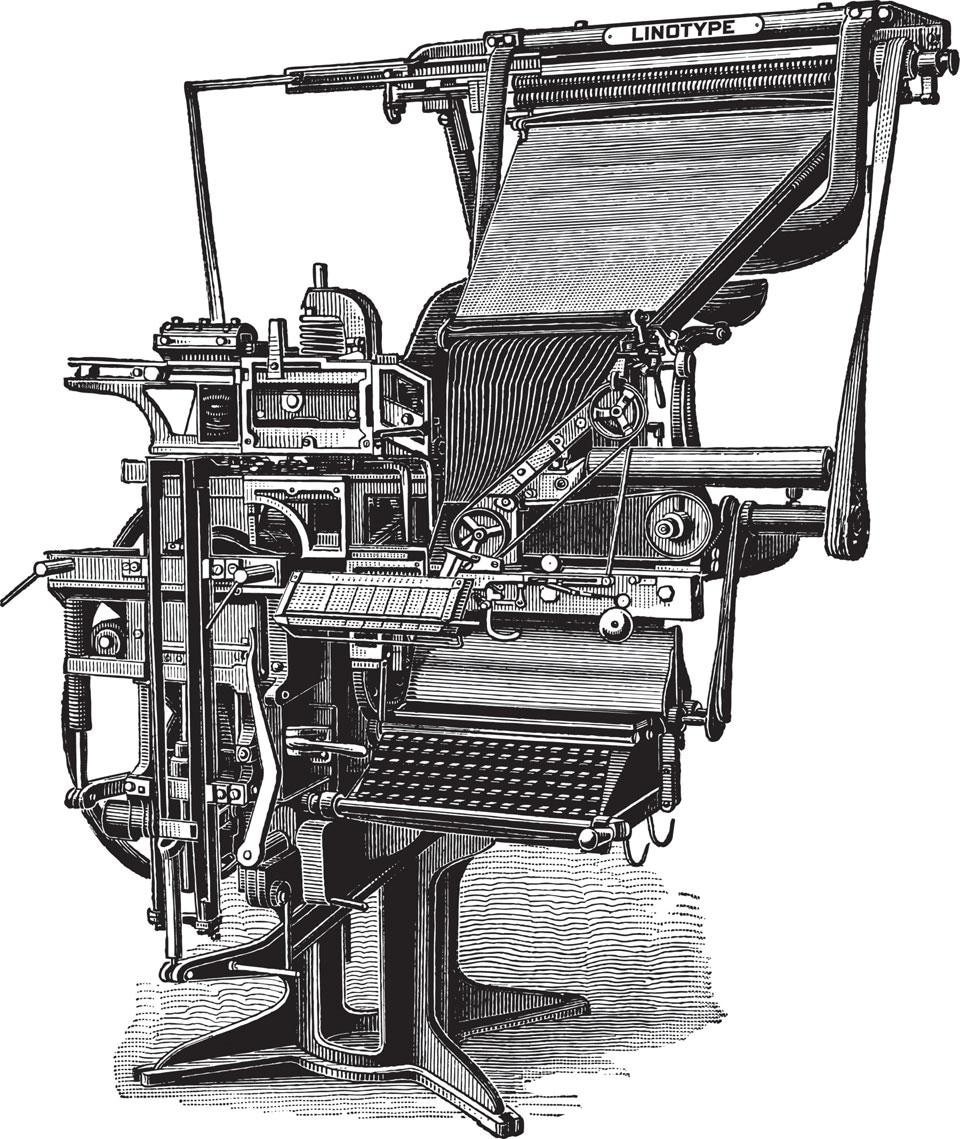
The movie isn't actually about a piece of machinery. It's about a cast of characters, each one telling their own versions of love stories for such an unusual contraption
